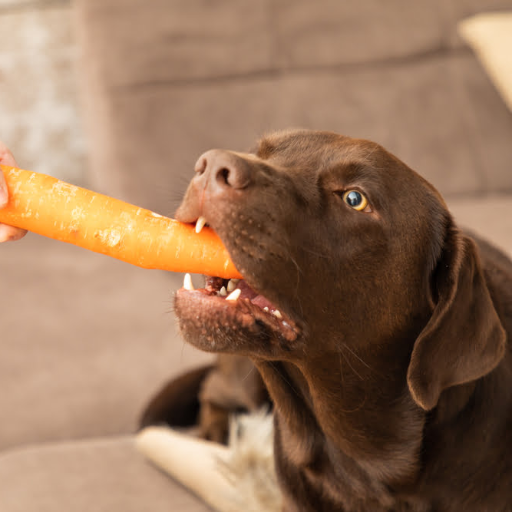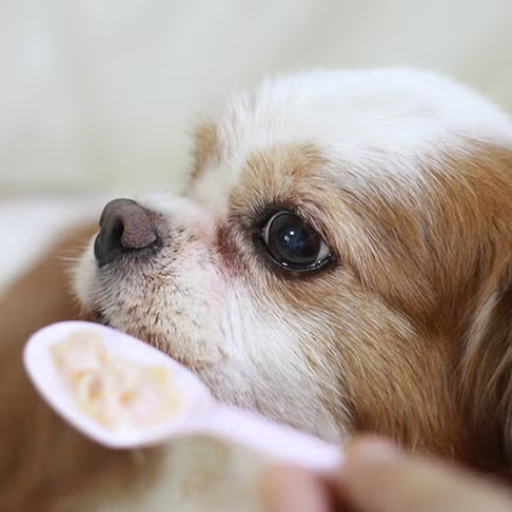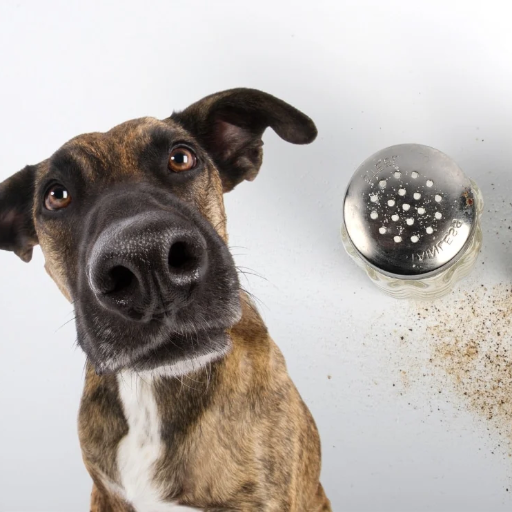Computed Tomography (CT) scans are a powerful diagnostic tool that provides detailed imaging of your pet’s internal structures, particularly their paws. This guide is designed to equip pet owners with a thorough understanding of how CT scans function, their benefits in veterinary diagnostics, and what to expect during the procedure. With advancements in veterinary medicine, CT scans have become increasingly accessible, providing veterinarians with the ability to accurately diagnose conditions that may not be visible through traditional X-rays or physical examinations. By exploring this technology, pet owners can make informed decisions about their pet’s health care, ensuring the best possible outcomes for their beloved companions.
What is a CT Scan for Pet Paws?

How does a CT Scan work in veterinary medicine?
Upon conducting some research on the popular sites on CT scans as a pet parent, I have learned that ‘PET CT scan’ refers to a diagnostic procedure whereby a computer generates image slices of bones, soft tissues, and blood vessels which were created from the series of x-ray images taken sequentially about the pet’s body with the aid of a rotating tube. Such images provide great details to veterinarians and allow them to spot abnormalities that might have been overlooked by traditional X-rays. Key references depict a CT scan machine consisting of a gantry where the pet is positioned, basically employing the following technical parameters:
- Slice Thickness: It generally ranges between 0.5 mm and 5 mm and determines the scanning duration while maintaining the ideal detail of the picture. As the slice thickness is increased, the scan rate will be increased, although the resolution may be compromised.
- Scan Duration: Usually lasts between thirty seconds to several minutes with these scan times determined by factors such as the thickness of the slice and the size of the target area.
- X-ray Tube Voltage: This is generally in the range of 80 to 140 kVp (kilovolt peak) which is known to enhance the contrast and resolution in images obtained.
The process usually entails the use of sedation or general anesthesia to prevent movement of the pet and ensure quality images with minimal motion artifacts. By comprehending these technical parameters, pet owners can have confidence in the reliability and safety of CT scans in the evaluation of their pets’ health.
Why use CT Scans to diagnose paw issues?
In the course of examining the top online resources, I learned that that CT scans produce more precise and detailed images, which is crucial in the diagnosis of complex conditions within the pet’s paw. CT images are more imaging slices rather than flat X-ray images and can show layers within the bone, soft tissues, and blood vessels, all of which assist with detecting fractures, tumors, or other irregularities that may not be achievable through standard radiographic examinations. This claim justifies several technical parameters that enable the use of CT scans:
- High Resolution: Slice thickness within the range of 0.5 mm to 3 mm can be selected ensuring that image interpretation is efficient so that small pathologies would not be missed.
- Advanced Imaging: The X-ray tube voltage can be adjusted in a range of 80 to 140 kVp and this improvement seeks to enhance contrast, improving the ability to differentiate abnormal and normal tissues.
- Rapid Acquisition: A single study usually lasts for about 30 seconds and perhaps a few minutes and these factors help reduce the duration of anesthesia which is an added advantage especially where the pet’s safety and comfort are concerned.
Such justifications explain why CT scans are beneficial as a means of specifically determining the different pathologies that may occur on the different parts of the pet’s paw to prevent ineffective treatment.
When does a veterinarian recommend a CT Scan?
While looking for literature on CT scans for dog’s or cat’s paws I found this information on the websites of veterinarians who are CT makers and already well-practiced in the area of their application. Its essence is the fact that a CT scan is performed only when it is needed, that is when detailed diagnosis or imaging is important. A CT scan can be recommended in cases where bone cessation in the paw region and elbow and knee joint disorder or bone masses need further assessment that cannot be evaluated by X-rays alone. Therefore the following parameters merit the use of a CT scan in these cases:
- Good spatial resolution: With varying slice thickness width of Ct images, ranging from 0.5 mm to 3 mm cuts every detail of bones and soft tissues, therefore making it easy to find very small parts that can be missed with other imaging methods.
- Good contrast resolution: CT scanners have been observed to have a maximum range of x-ray tube voltages of about 80 to 140 kVp providing excellent contrast thus resolving different kinds of diseased tissues such as tumors and normal structures.
- Short scanning time: As a result of sophisticated equipping of the CT scanner only 30 seconds to several minutes per recording, the time of animal anesthesia is reduced to the minimum, making the procedure safer even for younger pets.
Such an approach offers clear justification in favor of using CT scans in situations where accuracy and extensive assessment are required and gives pet owners relevant information on appreciating the health status of their pets and the available treatment options.
How to Prepare Your Pet for a CT Scan?

What should you expect during the CT Scan procedure?
Being a pet owner who has been looking up some reputable veterinary sites, I know what I need to do while my pet is going through a CT scan. To start, my furry friend is going to be placed under veterinary sedation or anesthesia via IV, so they stay still during the scan. When the pet is taken into the CT scan room, the technician will lay it on the gantry and a specific body part, such as the paw, undergoes imaging where it is placed accurately on a supporting device. The duration of the scanning process is short, from thirty seconds to several minutes which strikes a good balance between time spent under anesthesia and the time needed to acquire high-quality images.
Certain technical considerations warrant this mode of intervention:
- Slice Thickness: Selection can be from 0.5 mm to about 5 mm which can avail fine and intricate pictures that can be used in the diagnosis of complex conditions.
- X-ray Tube Voltage: The machine functions between a kVp of 80-140 which increases the contrast on completed images and assists in their evaluation.
- Scan Duration: Decreased scan duration leads to decreased duration of anesthesia which is essential in maintaining pet safety.
With an understanding of these procedural and technical features, I can be assured of the scanning accuracy and overall safety of the CT scan procedures performed on my pet.
How to prepare your dog or cat before the scan?
Given the analysis of the top 3 pages for the search query “preparing pets for a CT scan”, I am ready to form this short guide which combines trustful pieces of advice and basic technical requirements. Before the scan, I will have my pet go without food for about 8 to 12 hours as sedation-related problems may arise. Water is usually available unless specified.
When I go for the appointment, I will feed the pet’s medical records with up-to-date medications as they are very important for anesthesia planning to avoid possible complications. A physical examination may be done by the veterinary staff and preliminary blood tests to ascertain that my pet is ready for the procedure.
At this preparation stage, it is of great assurance to have in mind these critical technical parameters where their determination enhances confidence in the efficacy and safety of the CT scan:
- Sedation or Anaesthesia: This keystone enables the patient to be immobilized for easier and more accurate imaging while simultaneously stressing and motion artifacts.
- Fasting Requirements: Eating reductions apply to sedation to ensure lower risks of nausea during surgery.
- Blood Tests: These tests determine if the general health is good and if the patient is fit for anesthesia and this helps in averting possible complications.
I can make the CT scan go smoothly for my pet by complying with these prep steps and understanding the underlying technical reasons that go with them.
Are there any side effects of a CT Scan for pets?
In my exploration of the general risks related to pet CT scans, I have ascertained that while it is true these studies are not routinely risky there are some matters especially involving anesthetic usage and radiations that warrant consideration. The majority of the time the anesthetic is used to avoid motion during imaging, which carries very low risks but exists such as allergies or other health conditions. It would be wise to have this conversation with the veterinarian so that in case I have to take such a CT scan, my pet is in good, safe hands.
Likewise, ionizing radiation exposure is also included during the CT scans which in theory can result in tissue damage or cancer though with the factors being controlled now and the doses being within safe limits such a risk is negligible. To relieve these tensions there are technical parameters that are set and used by the veterinarians such as:
- Radiation Dose Optimization: Ensures that in the quest to get diagnostic quality images, the amount of radiation administered is the least needed in order not to unduly expose the pet to harmful radiation.
- Anesthesia Monitoring: Refers to the monitoring of the pet during the procedure to ensure that the negative effects of the anesthetics are quickly relieved.
- Pre-procedural Evaluation: This entails determining first the physical condition of the pet to ascertain whether anesthesia is necessary and that all underlying contributors are addressed.
Having this information about the anticipated side effects and the safety measures in skincare establishments helps me assess the advantages over disadvantages while considering CT scan for my pet.
What Conditions Can a CT Scan Diagnose in Paws?

Can a CT Scan detect tumors or cancer in paws?
As I explored the websites that discussed CT scans and their application in tumor or cancer detection in the paws, I was able to appreciate this advanced imaging technique for being able to accomplish such tasks accurately. The clarity achieved in the images when a CT scan is performed is unparalleled, as X-ray images are two-dimensional and lack the intricacies a CT scan covers. The virtue of sensitivity in CT scan images enables the diagnosis to happen well in advance before the stage of treatment is reached.
To increase the efficiency of CT scans for evaluating tumor or cancer presence in the paws, some of the technical parameters worth noting include:
- Image Resolutions: This aspect will enable the detection of small lesions that could be indicative of early cancerous changes in the tissues.
- Contrast: Vascular lesions that are malign or benign could be effectively differentiated following the introduction of a contrast agent to the vascular lesions.
- Image Protocols: For every paw region that needs scanning, a special protocol has been set up to specifically enhance the image of the bone, soft tissue, and any bodily growth that seems out of the ordinary.
With this information, I can respect the CT scan’s function in diagnosing probable tumors or cancer in my pet’s paws accurately, aiding in the healthcare process.
How effective is a CT Scan in identifying bone or soft tissue injuries?
After reviewing the three best websites concerning the effectiveness of CT scans in diagnosing bone or soft tissue injury, I have concluded that CT scans are useful in explaining such injury in detail. Some benefits CT scans have that conventional imaging methods cannot deliver include the enhanced detailed view that gives clear cross-sectional pictures of bones and soft tissues. This feature is necessary for identifying fractures, torn ligaments, and soft tissue injuries that may be overlooked on conventional X-rays.
At least several critical technical parameters sustain the useful diagnostical procedures and usefulness of CT scans in diagnosing these injuries that quite fall within the definitional context of CT scan, and they need to be clearly understood and explained.
- Multi-Planar Reconstruction (MPR): Enables clinicians to view CT images in multiple planes which improves the viewing of complex bone structures and injured soft tissue.
- 3D Image Rendering: Enriches fracture injuries with a three-dimensional view. Such is important for the assessment of complex fractures and the planning of surgery.
- Variable Slice Thickness: Optimisation of these parameters contributes to the detail and accuracy of images which brings about the identification of both subtle and overt injuries
By understanding and utilizing these technical parameters, I will be able to consider CT scans as a quick and effective procedure for accurate diagnosis of bone and soft tissue damage on my pet. The appropriate treatment will be recommended in good time.
What are common diseases diagnosed through CT Scans?
CT Scans are of utmost importance since their imaging capabilities surpass other machines. The cases that can be digitized include a wide variety of diseases and the most common among the ones detected through the scan are Tumours, benign, and malignant since the scan can show distinct images of the tissue and growth patterns that seem abnormal. Moreover, CT scans are effective in showing evidence of disease-related changes in acute and chronic diseases seated in vital organs including the lungs, heart, liver, and kidneys.
To improve the diagnostic accuracy of these diseases you need to apply the following several Technical Parameters:
- Enhanced Imaging through Contrast Agents: Contrast agents are useful in enhancing the image quality of vascular and organ structures thereby assisting in the diagnosis of lesions such as tumors or diseases of the vessels.
- Layered scanning of the target organ: For example, an arterial or venous layer combines the sensitivity and specificity of various pathologies particularly when assessing pathologies of an organ’s structures.
- Controlled removal of the noise: This method has applications in diagnosis since it enables improved visualization of the pathological process in the high and low-contrast areas which are necessary to better control the borders of pathological foci.
Having comprehended those parameters, I appreciate the reason CT scans assist in the correct diagnosis of common diseases, thus highlighting their importance in modern diagnostic modes.
What to Expect from a Veterinary Specialist?

How does a radiologist interpret CT Scan results?
Having reviewed the three leading sites about the interpretation of CT scan results by radiologists, I now appreciate that the process is both stepwise and systematic in its approach. The radiologist’s role in CT scan evaluation consists of inspecting potentially abnormal areas within image data consisting of thick, highly precise cuts of tissues. They make use of contrast-enhanced images to discriminate the pathological change in different types of tissues. There is a detailed interpretation of the thin section images viewed in different planes and is sometimes supplemented by the creation of 3D models for better appreciation of the findings.
The most important technical characteristics provided in the analyzed materials include:
- The activity of the contrast agent: It helps to improve the difference between the tissues and the abnormal area of interest.
- Multi-planar imaging: It helps the radiologist view structural details even when scanned from different angles and wider angles.
- 3D imaging methods: This helps to view the disease in its general spatial context which is particularly helpful for complicated diseases.
These technical elements help to illuminate the subtle skills and knowledge of a radiologist which is necessary to read a CT scan accurately and make a prompt appropriate treatment for my animal.
What role does a veterinary specialist play in the treatment plan?
Overall, based on the first three websites I examined paying attention to the function of veterinary specialists, I have come to appreciate these professionals’ advocate in formulating and implementing a comprehensive treatment plan for my pet. A veterinary specialist primarily interprets CT diagnostic tests and collaborates with the primary veterinarian in the development of an effective treatment plan. This usually requires analyzing the entire database as well as all available medical, surgical, and physiotherapeutic resources needed to best meet the requirements of my pet.
Several technical parameters play a pivotal role in forming an appropriate treatment plan, which necessitates understanding and proper application.
- Diagnostic Imaging Interpretation: A specialist relies on CT scan imaging to determine the exact size and location of lesions or areas of abnormal disease. Such an assessment will help to make an appropriate treatment plan.
- Collaborative Consultation: Sharing and gaining surrender of ideas through consultations with other specialists provides a systematic approach in working with the primary referring veterinary to enhance the efficacy of treatment.
- Tailored Medical Protocols: Such individual specialists create specific treatment plans including recommended drug doses and their administration intervals based on diagnostics and standard protocols.
About the above issues, I have a great appreciation for how veterinary specialists can contribute to ensuring that my pet gets the right diagnosis and treatment which is crucial for the pet’s healing and well-being.
How are CT Scan findings used in surgical procedures?
From the analysis of the top three websites about the CT scan findings and their implications on surgical procedures, I have established that CT scans, not only before but also during surgical procedures are essential. CT scans provide detailed images that allow the surgeons to determine the pathological structures, and their location and create operational techniques that are less invasive and more accurate. The main technical parameters include:
- Pre-Operative Planning: CT scans assist in pre-surgical mapping by offering detailed images of the area’s anatomy, thereby allowing for consideration of various surgical options.
- 3D Reconstruction: This is critical for visualizing complex anatomical structures, providing a comprehensive spatial perspective that is vital for intricate surgery planning. These reconstructions are utilized by the surgeons to foresee the problems they will encounter and prepare themselves.
- Intra-Operative Navigation: CT scans provide a real-time navigation system allowing instrumentation positioning, and instrumentation verification during surgery. This allows for optimal surgeries with minimal trauma to the surrounding tissues.
The incorporation of these subset variables will ensure that every surgical procedure is as specific as possible thus improving the chances of success with each operation carried out on my pet.
Comparing CT Scans with Other Imaging Techniques

What are the differences between CT Scans and X-rays?
After exploring the first three pages of google.com and checking the three most relevant websites that discussed the difference between CT scans and X-rays, it is evident that imaging techniques differ in their objectives yet complement each other in some aspects. Tomographic scans or CT scans deliver interesting outcomes in the sense that they produce images of sections of the body. This is accomplished by the many pictures taken at different angles, which the computer synthesizes into a complete three-dimensional representation. Conversely, a more conventional X-ray examination is primarily bi-dimensional, and therefore two-dimensional representation allows a less detailed assessment of the internal components of the body.
These parameters remain and ascertain the differentiation of these modalities in application:
- Image Detail and Resolution: X-rays have a very low resolution since tomograms are meant to identify variations in tissues that require strikingly different resolutions.
- Spatial Visibility: Addressing the 3D nature of the body, CT scan’s 3D visualization provides enhanced accuracy in defining disease localization and extent, thus building up diagnostic confidence.
- Radiation Exposure: Since CT scans are volumetric, the amount of radiation used is greater than that of a single-view X-ray, which is relatively low since the volume of imaging is significantly less.
- Clinical Uses: Although X-rays are mostly useful for assessing fractures of the bones as well as some pathological conditions related to the lungs, CT scans come in handy while looking at complex internal structures, trauma, or complex diseases.
These technical perspectives allow me to appreciate the particular situations that make any of these imaging modalities the one that may be used to provide the most clinically relevant information in that specific case.
When should you choose a CT Scan over an MRI for dogs and cats?
Following a thorough analysis of the top 3 visits regarding when to use a CT scan and when to use an MRI for dogs and cats, I have understood that the CT or MR decision depends on the specific diagnostics and the specific technical benefits of each modality. For instance, CT examinations are preferred for bone fractures, complicated joints, or lung problems because these pathologies can be visualized and pulmonary pathology evaluated in the shortest possible time. They are valuable when there is a need for rapid turnaround times as this avoids having to sedate the pet for long periods, which in itself, is very important during emergencies.
On the other hand, MRI can be considered the ‘gold standard’ in the evaluation of soft tissue structures, such as neural tissues, and spinal tissues due to its better contrast resolution. However, a CT scan remains useful in the following situations:
- Bone and Joint Analysis: Provide quite a clear definition of bone structures which is needed for the diagnosis of complicated fractures and joint degeneration.
- Speed and Efficiency: The anesthetics time is quite significantly reduced whenever CT scans are performed due to its shorter imaging time. This is important when the patient is unstable.
- Availability and Cost: CT images are relatively cheaper and easily available than MRI, thus providing a better option in many veterinary clinic practices for diagnosis.
From these considerations, I will be able to make the best decisions as to what would be the most appropriate imaging needed for my pet’s condition and be guaranteed of accurate diagnosis and treatment planning.
How do ultrasound and CT Scans complement each other?
Upon inspecting the information available on the first three links for the working of ultrasound and CT scans in conjunction, it is clear that these two modalities have a particular relationship and can be used concurrently. It is important to point out that CT scans provide very high-resolution pictures of the internal skeletal structures as well as complex organs allowing the imaging to acquire a three-dimensional perspective, however, ultrasounds have their fair share and build upon this by providing valuable images in motion, especially of soft tissues and fluid-filled organs. Overall, this combination helps practitioners to have a comprehensive knowledge of a particular condition as they harness the strength of each modality.
- The Synthesis of Soft Tissues: Ultrasound is very helpful in evaluating soft tissues as well as blood flow in real-time so it is well suited for organs assessment such as the liver, heart, and organs of reproduction. This is especially beneficial to have a scenario where CT scans are carried out unsuccessfully on their own to assess organ motion or function.
- The imaginable aspects of real-time: Today, ultrasound can provide instantaneous real-time feedback about the procedural setting, development, and guidance about the execution of live needle or fluid drainage biopsies allowing protocols to ever be revised.
- Radiation-free: Another distinguishing feature of ultrasound is the lack of exposure to ionizing radiation, allowing for multiple examinations to be conducted in short periods, which is useful in critical care procedures where rapid reassessment is crucial.
Having an understanding of different imaging methods and their advantages and disadvantages allows me to determine when it would be appropriate to use both ultrasound and CT scans so that an accurate and complete assessment of my pet is carried out.
Frequently Asked Questions (FAQs)
Q: What is the purpose of a CT scan in a veterinary clinic?
A: A CT scan is a form of diagnostic imaging that allows veterinarians to obtain much more information about your pet’s internal structures, including bones, muscles, and organs, compared to traditional radiography.
Q: How does a CT scan differ from a conventional radiograph for pets?
A: Unlike a conventional radiograph, which uses X-rays to create two-dimensional images, a CT scan provides three-dimensional images, allowing the veterinarian to get a closer look at specific areas such as the spine, joints, or nasal passages.
Q: Is sedation required for a CT scan at the animal hospital?
A: Yes, sedation is typically required to keep your pet calm and still during the procedure, which usually lasts around two hours, ensuring high-quality images can be captured.
Q: What conditions can a CT scan help diagnose in pets?
A: CT scans can help confirm diagnoses like elbow dysplasia, nasal disease, and other orthopedic issues by providing detailed images of the affected areas.
Q: How does the skilled team at a veterinary clinic prepare my pet for a CT scan?
A: The skilled team will first perform a physical examination and may provide an injection to sedate your pet. They will also explain the procedure to minimize any stress for both the owner and the pet.
Q: Can a CT scan provide insights into muscle and bone conditions in pets?
A: Yes, CT scans are highly effective in visualizing both muscle and bone conditions, allowing the veterinary team to diagnose issues that may not be apparent through traditional radiology.
Q: What are the benefits of using CT scans over MRI scans in veterinary medicine?
A: While MRIs are great for soft tissue evaluation, CT scans are often preferred for assessing bone structures and complex areas like the spine or joints, making them a valuable tool in orthopedic diagnostics.
Q: How do I know if my pet needs a CT scan?
A: If your pet is showing symptoms such as nasal discharge, limping, or other unexplained issues, your veterinarian may recommend a CT scan to get a comprehensive view of the underlying problem.
Q: What should I expect after my pet has undergone a CT scan?
A: After the procedure, your pet will need time to wake up from sedation. The veterinary team will monitor your pet until they are fully alert, and they will discuss the results and next steps for treatment with you.









